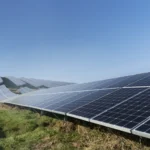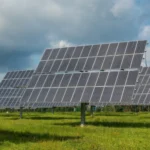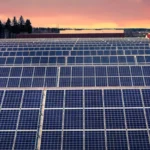Researchers Develop Technique to Improve Durability of Perovskite Solar Cells
Researchers Develop Technique to Improve Durability of Perovskite Solar Cells
A team of international researchers has developed a new technique that could significantly enhance the durability of perovskite solar cells, a promising emerging technology in photovoltaics. The technique, described in a recent study published in Science, could be an essential step towards commercializing perovskite solar cells and reducing their cost.
Perovskite solar cells are different from traditional solar cells as they are made from nano-sized crystals rather than high-purity silicon wafers. The perovskite crystals are dispersed into a liquid and spin-coated onto a surface using low-cost and well-established techniques. These types of solar cells have the potential to overcome the inherent efficiency limitations of silicon solar cells.
One key vulnerability point is the interface between the perovskite layer and the adjacent layers, called the carrier transport layer. These adjacent layers extract the electrons or holes flowing through the circuit. In cases where the chemical bonding between these layers and the perovskite layer gets damaged by light or heat, the electrons or holes can’t get into the circuit, which lowers the cell’s overall efficiency.
To address this issue, the international research team used computer simulations based on density functional theory (DFT) to predict what kind of molecules would best create a bridge between the perovskite layer and the charge transport layers. The simulations predicted that Lewis acids containing phosphorus would have the best effect.
In the lab, the team tried out various formulations of phosphorus-containing molecules and discovered that the best performance came from a material known as 1,3 bis (diphenylphosphino)propane, or DPPP. The team built inverted perovskite solar cells that contained DPPP and some without it. The team found that, with DPPP, the overall power conversion efficiency of the cell stayed high for approximately 3,500 hours under ambient conditions, without additional heating. This represents a considerable improvement compared to previous records, where perovskite solar cells tend to see a significant drop in their efficiency after 1,500 to 2,000 hours.
The team has applied for a patent for the DPPP technique and has received interest from commercial solar cell manufacturers. The researchers believe that their approach represents a new path forward, where DFT simulations and rational design can point the way towards promising solutions.
In recent months, other researchers have also made strides in perovskite solar cell research. Researchers at the École Polytechnique fédérale de Lausanne and Sungkyunkwan University in South Korea identified the cause behind the degradation of perovskite solar cells and developed a technique to improve their stability. Meanwhile, researchers at the Helmholtz-Zentrum Berlin achieved efficiencies of well above 24% for perovskite solar cells that are resistant to drop under rapid temperature fluctuations between -60 and +80 degrees Celsius over one hundred cycles.
The progress being made in perovskite solar cell research is exciting and shows promising potential for this technology to play a significant role in meeting our energy needs in the future. With continued development and investment, perovskite solar cells could become a cost-effective and efficient solution for renewable energy generation.
Suggested Articles

Rajasthan Rooftop Solar Subsidy: What Homeowners Need to Know
Rajasthan homeowners can save big with the 2025 rooftop solar subsidy. Learn about the updated rates, eligibility criteria, and benefits to make your switch to solar more affordable.

Latest Solar Mounting Structures: Smarter, Stronger, and More Efficient
Learn how the latest solar mounting structures in 2025 improve efficiency, reduce costs, and power the future of solar installations.

PM Surya Ghar Muft Bijli Yojana 2025: Online Registration Made Simple
PM Surya Ghar Muft Bijli Yojana 2025: Learn how to register online and get free electricity under this government scheme.

China’s Solar Industry Poised for Continued Growth in 2023 and Beyond
China’s solar industry is set for continued growth in 2023 and beyond, driving global renewable energy expansion and technological advancements.

How a String Monitoring Box Works in Residential Solar Systems
Understand how a string monitoring box helps track and protect your home solar panels for maximum efficiency and safety

Agrovoltaics Innovation: Boosting Solar Energy While Supporting Farming
Explore agrovoltaics innovation: how combining solar energy with farming boosts efficiency, supports agriculture, and maximizes land use.

Delhi Government Pledges to Boost Renewable Energy Generation
Delhi, the capital city of India, is moving towards a greener future with an ambitious plan to generate an additional 6,000 MW of electricity using renewable energy sources.

Rooftop Solar for Factories: Maximum kW You Can Install
Industrial rooftop solar guide: Understand KW capacity limits, installation guidelines, and best practices for factories and manufacturing units